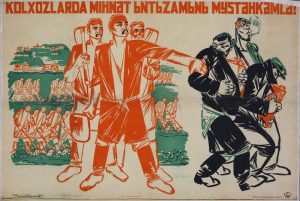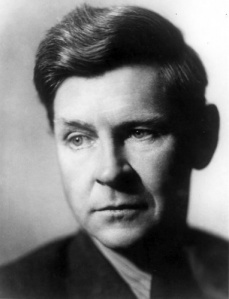Throughout history human civilizations have had to contend with the problem of prioritizing the individual over the collective whole or vice versa. Most famously this ideological conflict played out during the Cold War in which the dogged individualist tendencies of the United States battled against the collectivism celebrated in the Soviet Union.

“Strengthen Working Discipline in Collective Farms”
In addition to the Communist ethos on economic collectivization, the 1930s saw the rise of racially-imagined collectivist rhetoric in Nazi Germany. Both the USSR and Nazi Germany called for the subjugation of individual whims and desires in order to better serve the “greater good” of the group. Thus the individual was reimagined as a single cog within a greater machine.
However, for many Science Fiction writers with collectivist leanings, the collectivist drive of the 30s had fallen incredibly short of their aspirations. One of, if not the first, examples of group mind came from British philosopher and SF writer, Olaf Stapledon.

Stapledon was famous for his pacifism and his left-wing thinking, becoming an advocate for the left-leaning Commonwealth Party during the Second World War. In 1930 he published “Last and First Men”, a novel in which Stapledon imagined the next 2 billion years of human existence following the 1930s. In the final chapters of his book, Stapledon imagined a perfected version of human civilization in which humans cease to have individual identities, instead forming a single group mind, allowing humanity to act in unison as a type of Super-Organism.

Excellent banner image, title, and first post!